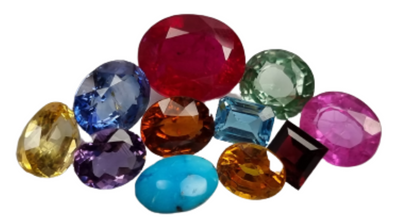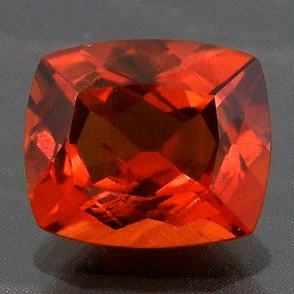Triplite: Gemstones Information
Triplite is a rare phosphate mineral belonging to the apatite group. It has the chemical formula (Mn,Fe)2(PO4)(F,OH), indicating its composition of manganese, iron, phosphate, and fluorine or hydroxide ions. Triplite was first described in 1823 and was named for its trigonal crystal structure. It occurs in various shades of brown, red, or yellow and is commonly found in association with other phosphate minerals in granitic pegmatites and hydrothermal veins.
Occurrence and Distribution:
Triplite is primarily found in lithium-bearing pegmatites and hydrothermal veins, often alongside minerals such as spodumene, lepidolite, and amblygonite. It occurs in diverse geological environments, including granite pegmatites, metamorphic rocks, and hydrothermal veins. Significant deposits of triplite have been reported from regions such as Sweden, Norway, Russia, the United States (especially Maine), Canada, and Brazil.
Physical Properties:
Triplite typically appears as translucent to opaque crystals, often with a vitreous luster. It has a Mohs hardness of around 5 to 5.5, making it relatively soft compared to many other minerals. The mineral may exhibit various shades of brown, red, yellow, or orange, depending on its chemical composition and impurities. Triplite’s streak color is typically white to pale yellow.
Chemical Composition:
Triplite is a phosphate mineral composed mainly of manganese (Mn), iron (Fe), phosphorus (P), and oxygen (O), with the possible inclusion of fluorine (F) or hydroxide (OH) ions. The relative proportions of manganese and iron can vary, leading to variations in color and physical properties. Triplite is structurally related to other phosphate minerals in the apatite group, such as fluorapatite and hydroxylapatite.
Uses and Applications:
Triplite has limited commercial applications compared to more abundant phosphate minerals. Historically, it has been of interest as a source of manganese and phosphorus in the production of fertilizers and chemical compounds. However, its significance as an ore mineral has diminished due to the discovery of larger, higher-grade deposits elsewhere.
In addition to its industrial uses, triplite may be collected as a mineral specimen by enthusiasts and collectors. Specimens with well-defined crystals, attractive coloration, or associations with other minerals may have aesthetic value to collectors interested in rare minerals or mineralogy.
Geological Significance:
Triplite’s occurrence in pegmatites and hydrothermal veins provides valuable insights into the geological processes associated with the formation of these unique rock formations. Pegmatites are known for their enrichment in rare elements and minerals due to the slow cooling and crystallization of magma. Understanding the distribution and behavior of triplite within pegmatites contributes to our knowledge of geological processes and ore formation.
Conclusion:
Triplite is a rare phosphate mineral with a limited range of applications, primarily occurring in lithium-bearing pegmatites and hydrothermal veins. While it has historically been of interest as a source of manganese and phosphorus, its commercial significance has declined over time. Nonetheless, triplite’s presence in geological formations provides valuable insights into the processes of pegmatite formation and the distribution of rare elements in the Earth’s crust.





